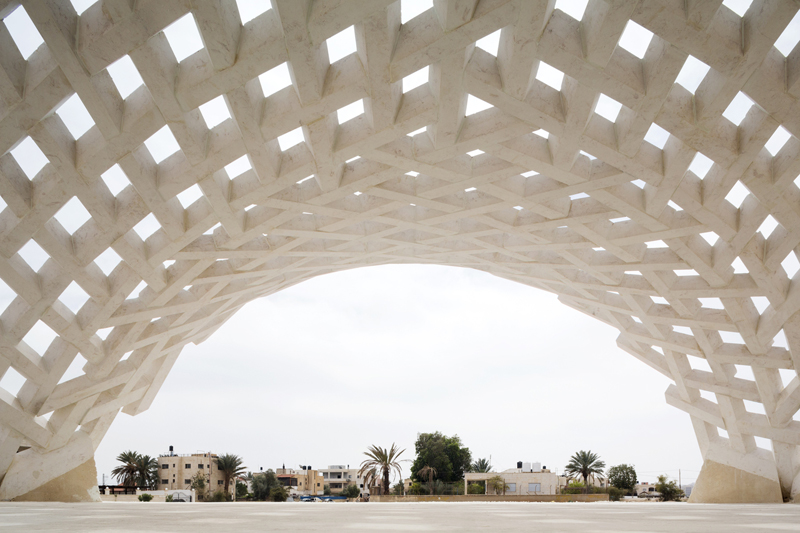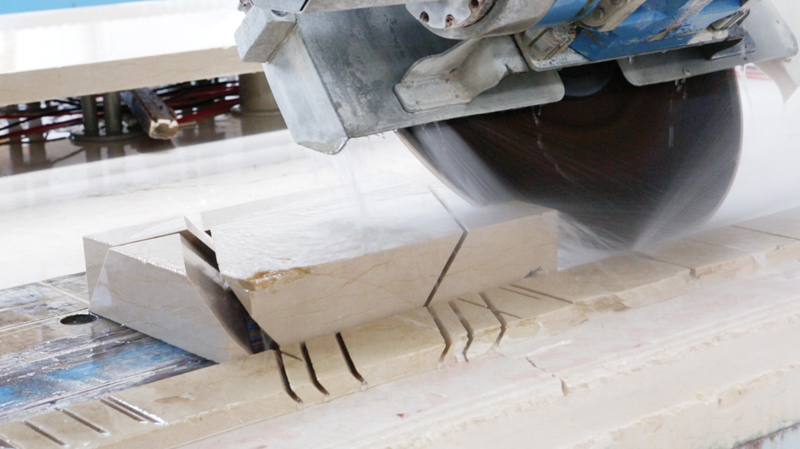Historically, materials and building methods have reflected the geographical characteristics of different places, giving a sense of belonging to the communities that inhabit them. Unfortunately, since the advent of the reinforced concrete era, material choices and building techniques have been narrowed down to metal, concrete, and glass, which results in generic buildings found all over the world.
Thankfully, designers throughout the world are noticing this trend, and are using digital fabrication tools in conjunction with traditional techniques, to produce beautiful and innovative structures. Here are some examples of the new ways old materials are being deployed around the world.
PAUSE by Ashari Architects is a suspended installation in Iran, comprised of an array of red bricks that form an oculus. The purpose of the structure is to invite users to take a moment to enjoy everyday things in new ways. The red bricks are also clad in metal which create interesting visual effects, both during the day and when it is lit up at night. Photos by Amir Ali Ghafari
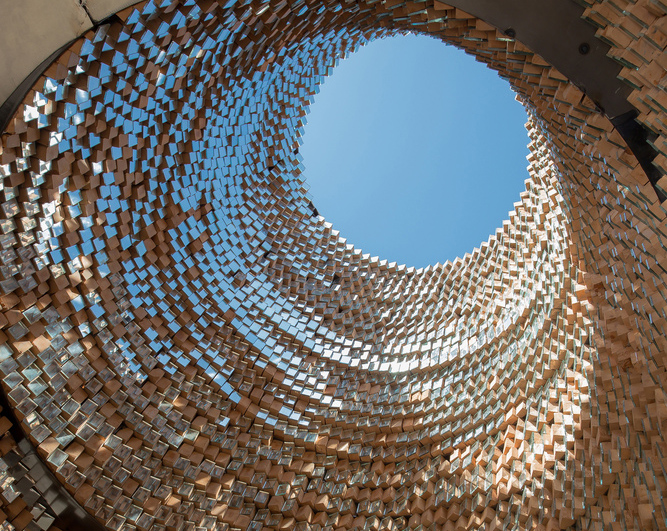

Computer software is opening up new ways to utilise materials that have long been thought to have particular limitations. This timber canopy in England by the Architectural Association School tests the tensile capabilities of timber creating a frame of ‘woven’ wooden members. In addition to this exploration, the team experimented with the possibilities of large-scale steam bending to produce bent columns from whole tree trunks. Photos by Valerie Bennet, Evgenia Spyridonos, and Kevin Kim
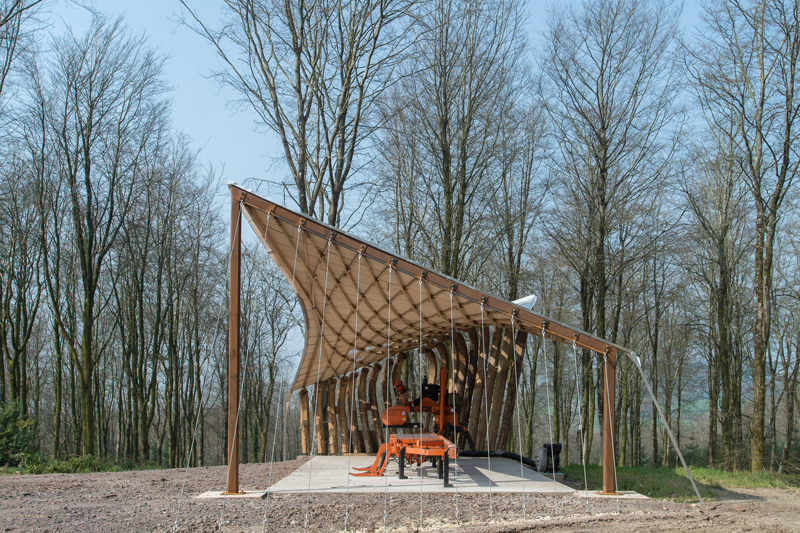
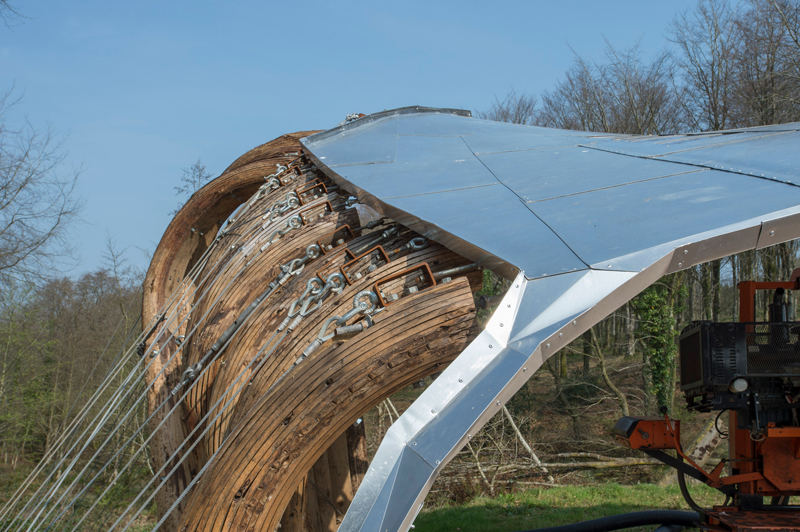
The experienced and skilled labour force required to execute traditional building techniques, such as bamboo weaving, is disappearing as the demand for such methods steadily declines. In a time of exacerbated technological advancements, it seems ironic that little has been done to explore other building techniques, besides steel and concrete. This scenario inspired students at the University of Hong Kong to use digital fabrication to create this bamboo woven canopy without the need for trained craftspeople.
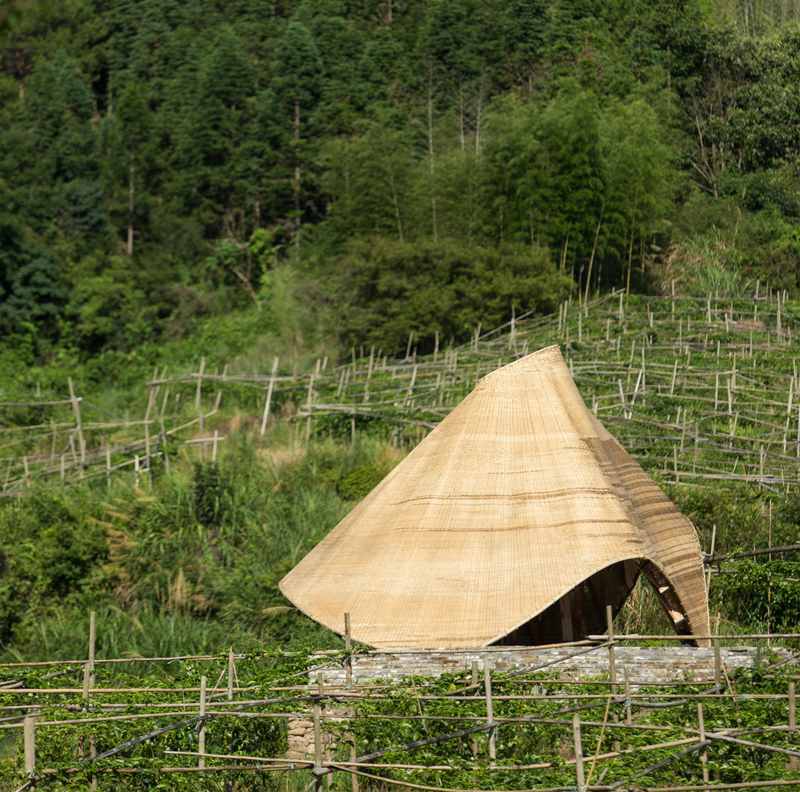

Acknowledging the endangered role of stone as a structural construction material in Palestine, and around the world, AAU ANASTAS designed Stone Matters with the help of robotic manufacturing and computational modelling, to produce this self-supporting structure composed solely of individually cut stone blocks, highlighting the possibilities of this material beyond cladding. Photos by Mikaela Burstow
